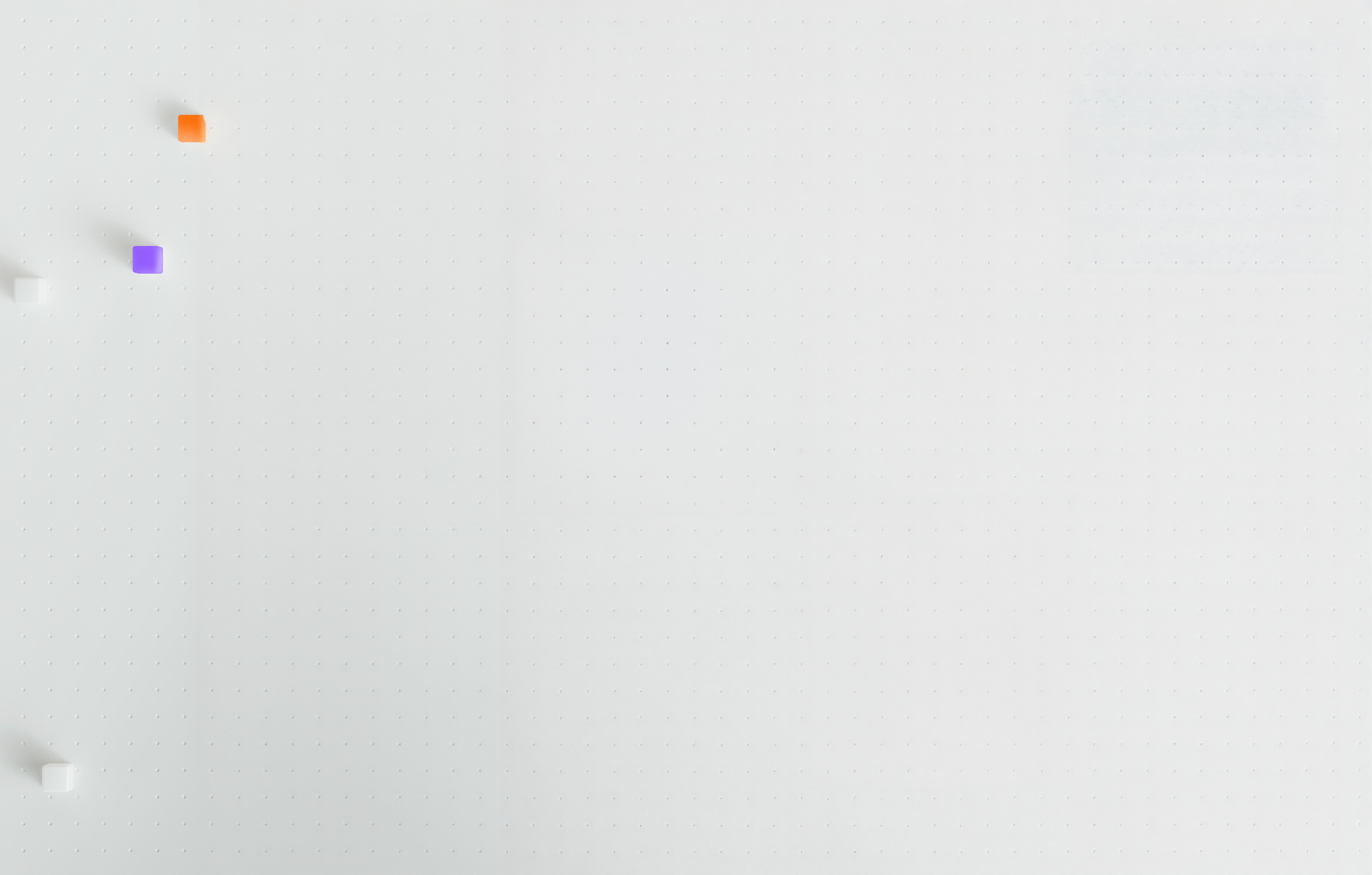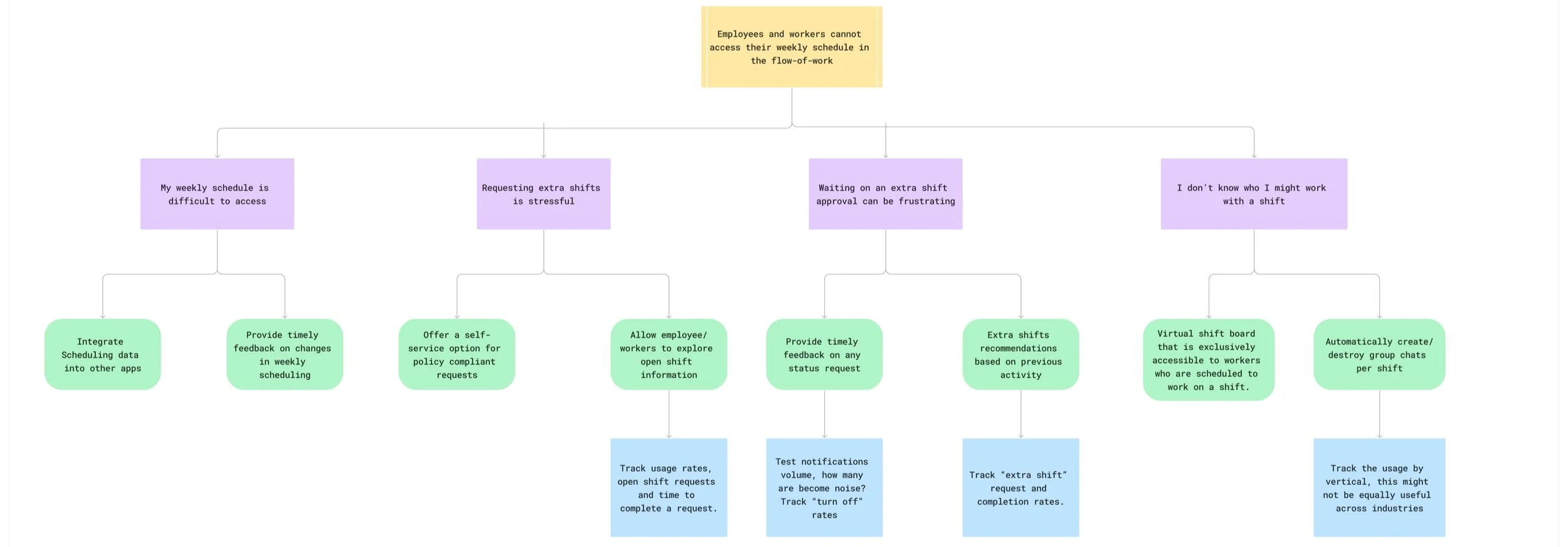Product Strategy • UX Strategy • Prototyping • Mixed-Method Research
Conversational Experiences
I led the product strategy and UX of microapps, enhancing schedule management and other functionalities to improve the workday for employees, managers, and workers.
I redacted confidential information in this case study to comply with my NDA. All data in the study are mine and do and do not reflect UKG's views.
Project Overview
The project aimed to help UKG improve customer satisfaction. We found that customer organizations preferred all-in-one HR technology over single-purpose tools. Meanwhile, workers sought better tools for managing their daily work and schedules, often resorting to personal apps.
We aimed to:
To be as straightforward as possible, "Chat here to control your work."
Understand context to make it intuitive for everyone to use, regardless of location.
Integrate HR and scheduling data enabling employees to take actions on the go.
Strengthen our tech partnerships to enhance service for our mutual customers.
This diagram is an opportunity tree that visualizes potential areas for product development and improvement, based on insights from research and discussions with product managers, designers, and researchers.
The Solution
The solution consisted of multiple microapps, we aimed to build reusable conversational blocks to be integrated across dozens of third-party platforms. The first cohort of conversational platforms selected came from our biggest tech partners: Microsoft, Google, SalesForce/Slack, Toast, and PayPal.
To provide the easiest most natural interaction we focused on designing for Multi-modal conversational UX by combining text, and touch interactions with multiple sources of information such as knowledge bases, HR date, employee context, business rules, and workflows.

My Role
The project was at a standstill; my mission was to move it forward. After just a few weeks of leading discovery sessions and research, things started moving forward—with regular standups and milestones finally happening!
Overall, I stretched myself and my work across three main categories:
Product Management
Lead discovery sessions
Competitive Analysis
Use Cases, Story Cards, MVP definitions
Coordinated tech partner collaborative work
UX
Facilitated discovery sessions
Personas and User Journey
Opportunity Tree Analysis
Prototyping, UI, and mockups
Research
Led end-to-end primary and secondary research.
Survey design
Concept testing
Customer Focus Group
UX artifacts & deliverables
In this section, you can explore some of the deliverables I produced during the trajectory of this project.
Research Insights
What to integrate first? What is the most important functionality to deliver? Who is our most important demographic?
Determining what to tackle first and identifying the most critical functionality to deliver were key focuses during research and discovery. We successfully narrowed down the use cases.
Prioritized Use Cases:
Scheduling actions: View and Swap Shifts, Request Open Shifts, Drop a Shift.
Personal Time Off: View and Request Time Off, Sick Leave, or Drop a Shift.
Polls & Surveys: Listen to teams' feedback through polls and surveys.
Performance: Track worker performance more efficiently by sharing text messages with positive reviews or recognition.
Findings from evaluative research conducted with Front-Line workers. Mixed-method study via Recollective. Qual + Quant.
“It would save me 15 minutes of hassle of navigating around the building.”
“The self-service aspect alleviates social anxiety and reduces the waiting game.”
UX artifact: Persona that summarized our most common user archetypes from Front-line worker study.
User Journey
We mapped out multiple user journey maps to ground meaningful discussions across teams and helped keep the focus while planning our future roadmap.
Story Cards
These deliverables helped ensure that the teams remained focused on user value and helped us quickly adapt to changes in project scope or priorities.
Prototyping
As the lead UX designer for this project, I developed unique prototypes tailored to each platform and its specific end-goal. Some were designed to prepare for partner conferences, such as Google Next, while others served to guide the Development team on conversational interactions.
What I learned…
Reflecting on the journey and future trajectory of the UKG FleX Flow initiative, it's clear that this was merely the opening chapter in a broader narrative of transformative HR data integrations.
This project represented a pivotal step towards a more open platform in Human Capital Management (HCM)—a paradigm shift many of our customer’s organizations are not eager to embrace. Yet employees and workers are increasingly willing to use their own devices even when this means bypassing company policy.
As we forge ahead, we must focus on facilitating access to HR data, much like consumer apps have done by integrating with external ecosystems. We can empower businesses to harness their data landscapes more effectively by making organizational systems leaner and more integrated.
Today marks just the beginning. We continue to learn, adapt, and innovate with each step forward. It's day one in a continuing project to redefine the workplace through technology, and there is still so much to discover.





